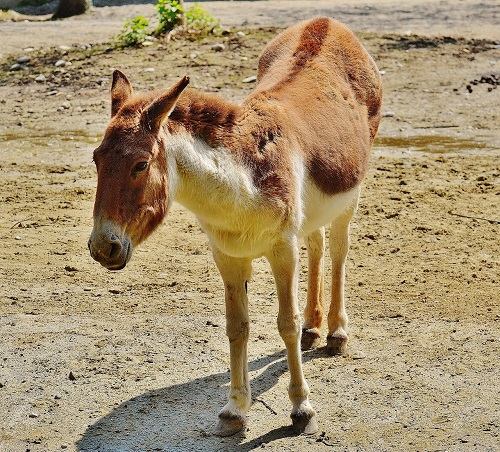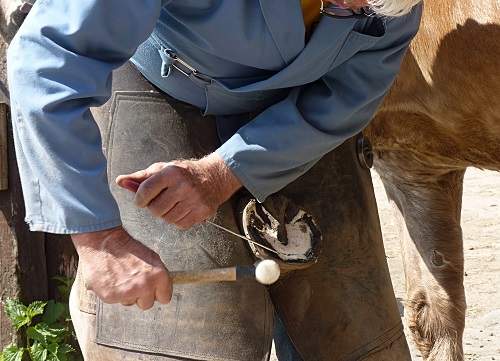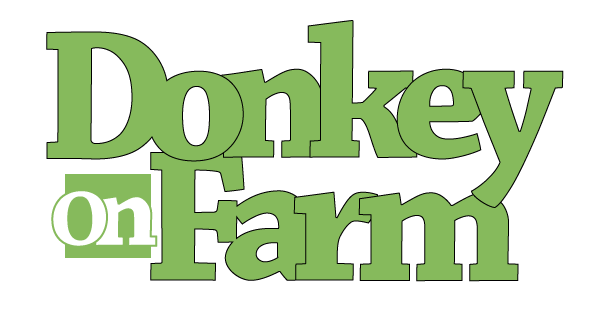Hoof care is as vital to donkeys as their diet. It can even affect their overall well-being. So, how often do donkeys need their hooves trimmed? Experts advise that you have your donkeys’ hooves trimmed every once in 6-10 weeks. Since it is the hooves that take up the whole weight of the donkey and keeps them on their feet, it is vital that you give it the required care.
Why Do Donkeys Need Their Hooves Trimmed?
Donkeys are basically animals that live in deserts and country regions. They adapt best to dry climates. And hence, their hooves have increased capacity to store and retain water content. But when these donkeys are domesticated and kept in stables, they are met with more moist lands and lust pastures. This will result in their hooves getting softer and prone to foot diseases. In such a case, proper hoof care and management are necessary to prevent diseases and infections.

Hoof diseases being a common issue in domesticated donkeys is the lack of natural wear that their hooves undergo if they lived in the wild or on hard surfaces. While donkeys staying on softer surfaces require their hooves trimmed every 6-10 weeks, the ones living over rocky surfaces only need them trimmed twice a year or so.
Are Donkey and Horse Hooves the Same?
Though both donkeys and horses descend from the same ancestors, their hooves are quite different from each other. Their differences in environments they adapt to and the course of evolution have resulted in them getting hooves that are slightly different from each other. Since donkeys were meant for semi-arid and rocky lands, they have tougher hooves than horses so that the rocks will not break the hooves. Compared to horses’ hooves, donkey hooves are smaller, steeper, and more flexible for surviving on dry and harsh grounds as opposed to horses.
Trimming Donkey Hooves
Before starting with the trimming, it is important that you get the donkey in a space where they cannot run away. But if you have calm and friendly donkeys who are not scared of the process, you can easily skip this step. Once the donkeys are comfortable around you and the farrier, you could lift their legs and start working. And those who are restless and do not cooperate with the trimming could be sedated and calmed down with the help of a vet before you get on with the process. Since donkeys’ rear legs are powerful, one kick can turn out bad for you.

The first step involved is always the cleaning part. Here, the farrier will use their hoof knife to clean the debris and detritus embedded in the hooves. Then the farrier will look for flaky soles and trim the edges that have gone rough. Donkeys who get their trimming done regularly will not have many overgrowths. But if you have a donkey with an overgrown foot, taking a radiograph before trimming is advised to check whether the bone inside the hoof has undergone any change. You may even consult a veterinarian for the following trimming and pain relief.
Some Common Hoof Problems in Donkeys
Most of the foot-related issues that donkeys face are due to the environment they are placed in. Wet climate is almost always the reason behind them getting infections, which can also be prevented with proper care and checkups.
Seedy toe or white line disease is a condition that donkeys suffer from when the white line area on their hoof becomes weak and starts to crumble. This is not a painful situation unless the condition gets worse. The white line that is now weak and widened could allow the entry of foreign particles and organisms, causing pain and infection.
Another foot infection called thrush affects the underside of the foot, commonly on the frog of the hoof. This happens as a result of keeping the donkey in wet conditions and can be prevented by keeping your donkey’s hooves as dry as possible all the time. When a donkey contracts thrush, the feet start to smell unpleasant.
Laminitis is another foot disease that calls for an emergency in the donkey world. The condition will cause severe pain to your donkey and often have permanent consequences. Infection, pregnancy, and consuming too much nutritious food can cause laminitis in donkeys. Once you find your donkey lying more often than usual, suspect laminitis and contact a doctor as soon as possible.
A foot abscess can also cause immense pain to your donkey. This condition arises following a deep wound on the sole or the white line and the wound not getting healed properly, leading to an infection. Contacting the veterinarian once you find an abscess is necessary to relieve the donkey from pain.
How to Identify if Your Donkey is Suffering?
Donkeys do not communicate their pains as efficiently as other animals. They suffer it to the point they cannot take it longer. You can suspect something is wrong with your donkey when you see them limping or being reluctant to move around the usual way. A common practice when donkeys stay lying down is to label them lame or stubborn. And it is one of the reasons for many of the hoof-related problems go unnoticed. So next time you find your long-eared friends weary and refusing to walk, check with a vet immediately.
Conclusion
You are now well-informed about how often donkeys need their hooves trimmed. Now you can book the next appointment with your farrier without any doubts. Hoof care is an integral part that determines the overall health of your donkey. Hence, take the necessary measures and keep your donkeys happy and healthy.

![How Often Do Donkeys Need Their Hooves Trimmed? [Plus Common Hoof Problems] how often do donkeys need their hooves trimmed](https://donkeyonfarm.com/wp-content/uploads/2023/07/Donkey-Cute-Equine-Animal-Mother-Home-Family-Son-5339958_11zon.jpg)

![How Cold is Too Cold for a Donkey? [Plus Tips to Keep Them Warm] How-Cold-is-Too-Cold-for-a-Donkey](https://donkeyonfarm.com/wp-content/uploads/2022/09/How-Cold-is-Too-Cold-for-a-Donkey-270x180.jpg)
![Can Miniature Donkeys Be Therapy Animals? [Hint: They’re Different] can-miniature-donkeys-be-therapy-animals](https://donkeyonfarm.com/wp-content/uploads/2024/10/can-miniature-donkeys-be-therapy-animals-270x180.jpg)
![Do Donkeys Laugh? [Plus Why Do They Do It?] do-donkeys-laugh](https://donkeyonfarm.com/wp-content/uploads/2022/08/Why-do-donkeys-laugh-270x180.jpg)
![How to Get Rid of Flies on Your Donkey? [Plus Prevention Methods] How to Get Rid of Flies on your Donkey](https://donkeyonfarm.com/wp-content/uploads/2022/05/How-to-Get-Rid-of-Flies-on-your-Donkey-270x180.jpg)